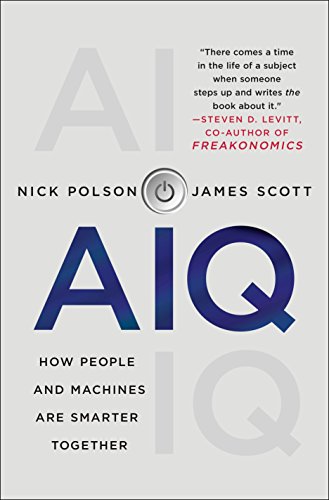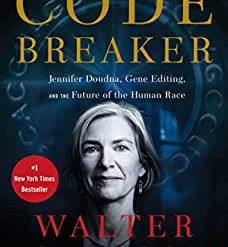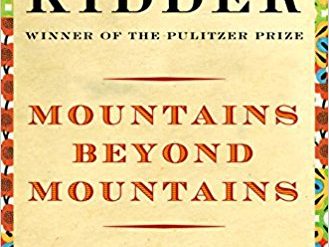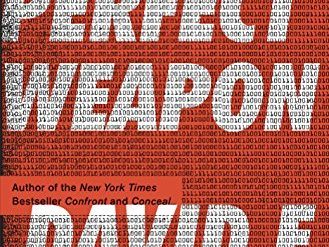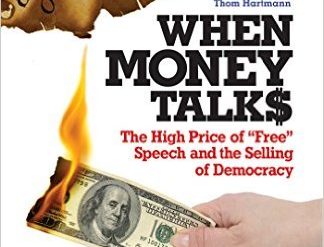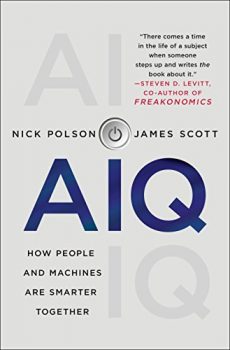
Most of the books about artificial intelligence highlight such things as self-driving cars and facial recognition—the brilliant innovations in hardware and software by the engineers and coders who build the stuff and make it work. They dwell variously on the field’s potential and its impact on our lives today. This book, by two academic data scientists, instead drills down into the underlying logic of AI, the fuel that powers it, and the statistical rules that govern its operations. Because artificial intelligence is all about statistical probabilities. And AIQ by Nick Polson and James Scott truly fulfills the promise of its subtitle: How Artificial Intelligence Works and How We Can Harness Its Power for a Better World.
The statistical rules behind how artificial intelligence works
Surprised that statistics should be central to artificial intelligence? Polson and Scott explain. “Open up a blank email on your phone and try dictating a test phrase: ‘The weather report calls for rain, whether or not the reigning queen has an umbrella.’ If you’re a native English speaker and your phone runs iOS or Android, it will almost surely get the sentence right, without confusing weather/whether or rain/reign . . . The software knows that ‘whether’ and ‘reign’ are statistically more likely in some contexts, while ‘weather’ and ‘rain’ are more likely in others. This isn’t because your phone somehow understands the meaning of words. There’s no meaning involved, just a rich set of context-specific probabilities for basically every English word and phrase ever uttered on the internet.” And how does it know all that? Because the superfast computers on which the software runs have surveyed “basically every English word and phrase ever uttered on the internet.” (Yes, they can do that.)
AIQ: How Artificial Intelligence Works and How We Can Harness Its Power for a Better World by Nick Polson and James Scott (2018) 261 pages @@@@@ (5 out of 5)
The people who laid the foundation for artificial intelligence
One of the reasons this book reads so well is that the authors infuse each chapter with the story of an individual whose work—sometimes centuries ago—laid the foundation for what we now call artificial intelligence. And what people they are! The group includes some who are truly famous (Sir Isaac Newton and nurse-administrator Florence Nightingale) or near-famous (computer scientist Grace Hopper and baseball great Joe Dimaggio) as well as those you’ve probably never heard of (a Hungarian-American statistician named Abraham Wald and astronomer Henrietta Leavitt).
The surprising work of Florence Nightingale
Every one of these stories is fascinating, but the most in-depth of them features Florence Nightingale. “It turns out that when she wasn’t caring for soldiers, Nightingale was also a skilled data scientist who successfully convinced hospitals that they could improve health care using statistics. In fact, no other data scientist in history can claim to have saved so many lives as Florence Nightingale. In 1859, in honor of these achievements, she became the first woman ever elected to the U.K.’s Royal Statistical Society.” Surprising, isn’t it? (If not, go to the head of the class.)
It’s happening now, and it’s only the beginning
For the most part, in their effort to explain how artificial intelligence works, Polson and Scott dwell on its history and underlying logic. But they venture into the future as well. “Today?” they write. “Self-driving cars are just the start. Don’t forget about autonomous flying taxis, like the ones the government of Dubai has been testing since September of 2017. Or the autonomous iron mine run by Rio Tinto, in the middle of the Australian outback. Or the autonomous shipping terminal at the Port of Qingdao, in China—six enormous berths spanning two kilometers of coastline, 5.2 million shipping containers a year, hundreds of robot trucks and cranes, and nobody at the wheel.” So, is this a good thing, or bad? How many jobs will be lost through such projects? Polson and Scott don’t spend time on the question. You’ll need to read another book for perspective on the matter. This book will just help you understand how very logical it all is.
For further reading
You’ll find other books on this topic at Two dozen good books about artificial intelligence reviewed here.
I’ve also reviewed four other books about data science:
- Big Data: A Revolution That Will Transform How We Live, Work, and Think, by Viktor Mayer-Schoeneberger and Kenneth Cukier (From two experts: The coming Big Data revolution)
- Naked Statistics: Stripping the Dread from the Data, by Charles Whelan (How Netflix, Wall Street, and economists use and misuse statistics)
- The Signal and the Noise: Why So Many Predictions Fail—But Some Don’t, by Nate Silver (How experts make sense of the world (or don’t) with statistics)
- The Tyranny of Metrics, by Jerry Z. Muller (Every manager should read this book about the use and misuse of metrics)
You might also be interested in:
- 10 best books about innovation
- 5 best books about Silicon Valley
- 20 good nonfiction books about the future (plus lots of science fiction)
- Science explained in 10 excellent popular books (plus dozens of others)
And you can always find my most popular reviews, and the most recent ones, plus a guide to this whole site, on the Home Page.

